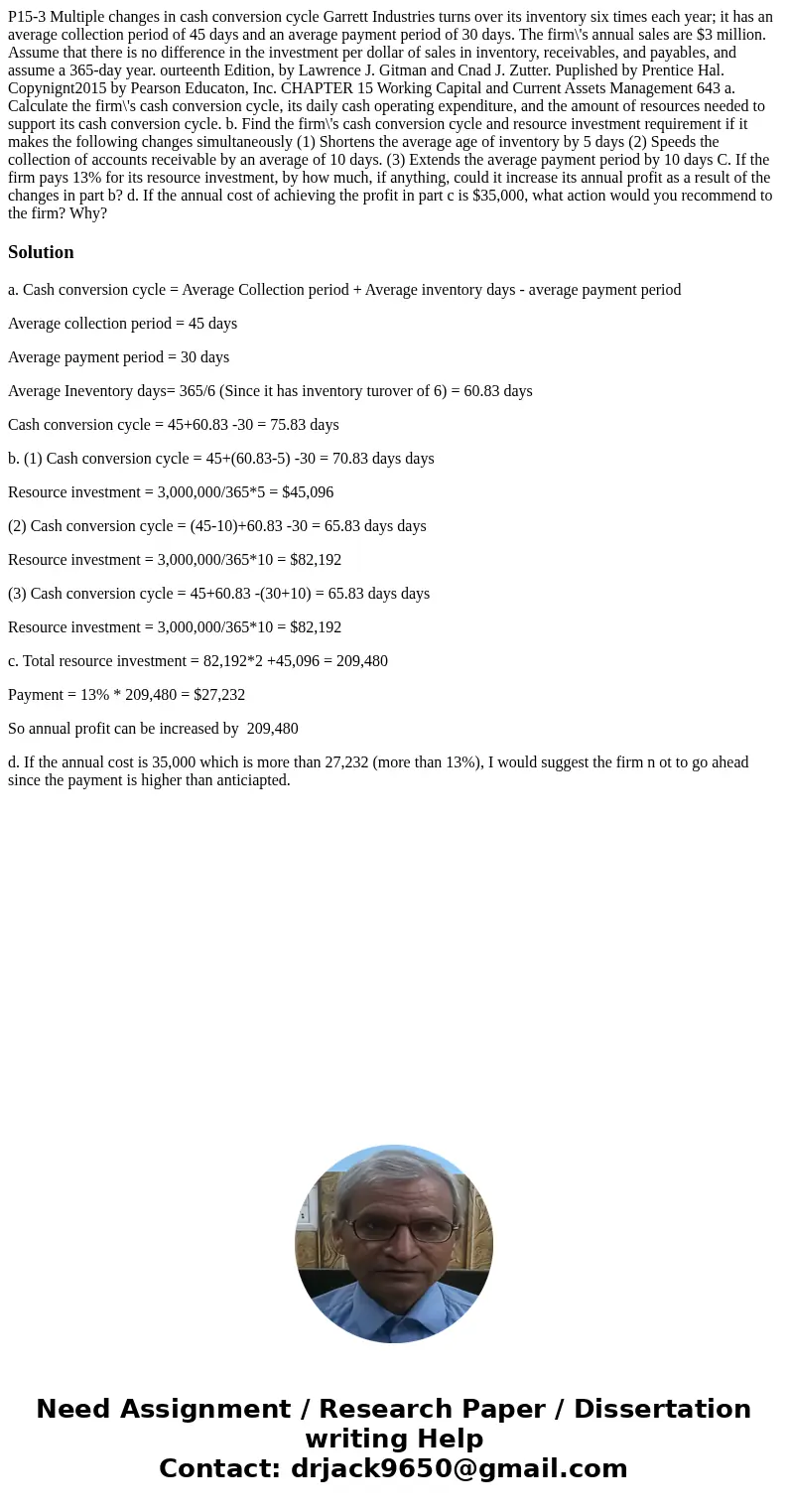P15-3 Multiple changes in cash conversion cycle Garrett Industries turns over its inventory six times each year; it has an average collection period of 45 days and an average payment period of 30 days. The firm\'s annual sales are $3 million. Assume that there is no difference in the investment per dollar of sales in inventory, receivables, and payables, and assume a 365-day year. ourteenth Edition, by Lawrence J. Gitman and Cnad J. Zutter. Puplished by Prentice Hal. Copynignt2015 by Pearson Educaton, Inc. CHAPTER 15 Working Capital and Current Assets Management 643 a. Calculate the firm\'s cash conversion cycle, its daily cash operating expenditure, and the amount of resources needed to support its cash conversion cycle. b. Find the firm\'s cash conversion cycle and resource investment requirement if it makes the following changes simultaneously (1) Shortens the average age of inventory by 5 days (2) Speeds the collection of accounts receivable by an average of 10 days. (3) Extends the average payment period by 10 days C. If the firm pays 13% for its resource investment, by how much, if anything, could it increase its annual profit as a result of the changes in part b? d. If the annual cost of achieving the profit in part c is $35,000, what action would you recommend to the firm? Why?
a. Cash conversion cycle = Average Collection period + Average inventory days - average payment period
Average collection period = 45 days
Average payment period = 30 days
Average Ineventory days= 365/6 (Since it has inventory turover of 6) = 60.83 days
Cash conversion cycle = 45+60.83 -30 = 75.83 days
b. (1) Cash conversion cycle = 45+(60.83-5) -30 = 70.83 days days
Resource investment = 3,000,000/365*5 = $45,096
(2) Cash conversion cycle = (45-10)+60.83 -30 = 65.83 days days
Resource investment = 3,000,000/365*10 = $82,192
(3) Cash conversion cycle = 45+60.83 -(30+10) = 65.83 days days
Resource investment = 3,000,000/365*10 = $82,192
c. Total resource investment = 82,192*2 +45,096 = 209,480
Payment = 13% * 209,480 = $27,232
So annual profit can be increased by 209,480
d. If the annual cost is 35,000 which is more than 27,232 (more than 13%), I would suggest the firm n ot to go ahead since the payment is higher than anticiapted.

 Homework Sourse
Homework Sourse